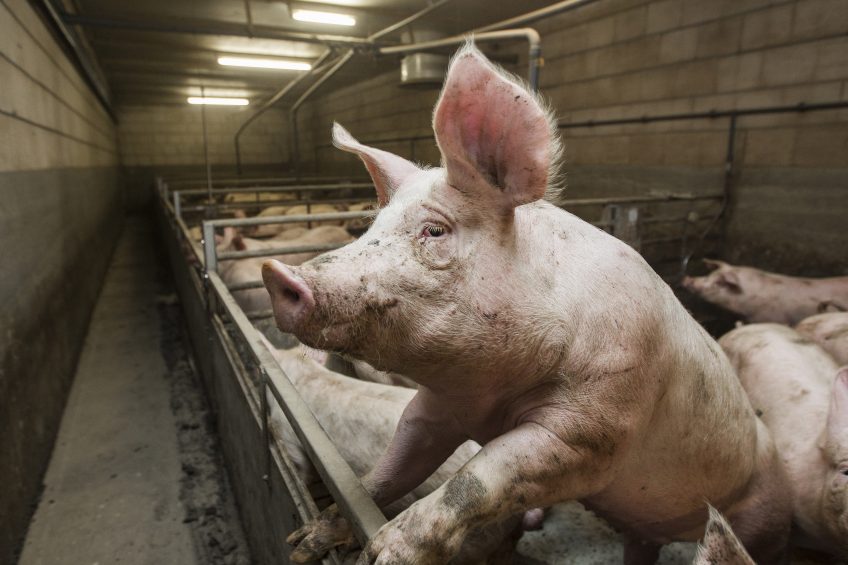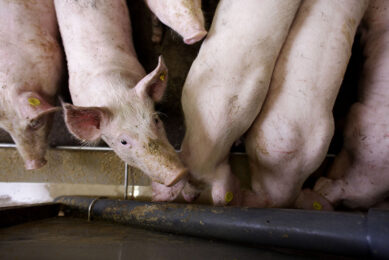Quantifying health challenges on pigs

Understanding how disease affects commercial production is imperative for pig producers to quantify its full impact on pig performance, carcass quality and net returns. Research conducted on US commercial pig farms examined the consequence of health challenges on these parameters.
While swine production in America’s Midwest is in a unique position of being favourably located geographically, having a high density of pig farms increases the risk of disease transmission among farms. Porcine reproductive and respiratory syndrome virus (PRRSV) is the costliest disease facing US pig producers, with estimated annual losses of US$ 664 million. Influenza type A virus of swine (IAV-S), is also considered economically important due to reduced growth rates and increased morbidity. A co-challenge of PRRSV with IAV-S or other pathogens would be considered even more costly due to the compounding of disease symptoms.
In the event of a health challenge, it is well understood that growth performance will be influenced due to a reduction in feed intake and muscle protein catabolism along with the diversion of essential energy and nutrients to support immune function. Previous research has reported reduced average daily gain (ADG) under a PRRSV-IAV-S challenge; however, no other published data exist that describe the impact of a PRRSV and IAV-S co-infection specifically on growth performance in grow-finish pigs.
Most disease research is performed in controlled research facilities with attention directed at a single pathogen in order to elucidate the infection mechanism and better understand biological responses. Fully understanding the ways disease impacts commercial production is imperative to quantify the influence of disease on pig performance and net financial returns. Studies conducted in a research facility have the advantage of being well controlled but the disadvantage of uncertain relevance to practical conditions; conversely, studies carried out on commercial farms enhance relevance but maintaining proper controls can be difficult. The ideal situation would be an intensive, well-managed study carried out in a commercial research facility which requires attention to detail, adherence to accepted standards of scientific endeavour and a great deal of on-site labour.
3 identical trial set-ups
Researchers at Iowa State University set up an experiment to assess the relative impact of naturally occurring health challenges under commercial conditions on productivity and financial returns, hypothesising that a more severe health challenge would decrease productivity and reduce net income. 3 1,000 head grow-finish barns located on the same geographical site in Iowa were each populated with 936 cross-bred pigs. The barns were located on the same site to eliminate the chance of differences in weather affecting outcomes. The pigs in the 3 barns, which were identical in design, management and operation, received identical diets during the experiment.
Each barn contained:
- 46 pens, (16.8 m2),
- with completely slatted concrete floors,
- metal pen dividers and gates,
- 2 nipple water drinkers, and
- 1, 5-space stainless-steel dry feeder.
- feed was delivered by an automatic system that delivered specific amounts of feed to specific pens.
- each barn was equipped with identical integrated ventilation controllers, which regulated exhaust air inlets and heaters.
36 of the 46 pens were filled with 26 weaned pigs each at the time of allotment. At placement, pigs were allotted by sex (16 barrow pens, 16 gilt pens and 4 mixed sex pens) and size. Based on visual assessment, each pen received 6 ‘small size’, 14 ‘medium size’ and 6 ‘large size’ pigs. This procedure helped to ensure a similar bodyweight (BW) distribution among pens within each barn.
The pigs were placed on site at weaning, with the study starting at approximately 34 days post weaning (13.1 ± 0.2 kg of BW). Pigs remained on test until achieving marketing BW of approximately 130.5 ± 1.4 kg. All the barns were placed on the same feeding programme consisting of 8 dietary phases, and the pigs were provided ad libitum access to feed and water. Throughout the course of the study, the pigs were cared for by the same personnel and veterinary service.
Characterisation of the health challenge
Each of the 3 barns were characterised according to the overall observed health challenge (HC). The HC was considered the applied treatment. Oral fluids were collected on d 7, 63 and 105 to monitor pathogen exposure. Mortality, morbidity and medication treatments were recorded daily to further assist in characterising the health challenge within each barn. Daily animal observations aided in ensuring all animals received appropriate care.
Based on this approach to characterise the HC, barns were characterised relative to each other as low challenge health (LCh), moderate challenge health (MCh) and high challenge health (HCh). The disease challenges experienced by the barns were not imposed but rather occurred naturally, similar to what occurs in commercial production. The goal was to maintain a separate HC in each barn for the duration of the experiment. A strict biosecurity protocol was established to avoid pathogen transfer among barns, as the barns were in close proximity to one another.
At the end of trial, all barns showed clinical PRRSV symptoms including lethargy, mortality and reductions in gain. Oral fluid PCR evaluation revealed that they had all experienced a PRRSV infection. The HCh treatment had the greatest oral fluid PRRSV genomic copy concentration at d 7 and 63; however at d 105, the MCh had the greatest concentration (Figure 1).
Figure 1 – Oral fluid PRRSV concentration for 2 HC at days 7, 63, and 105 in grow-finish pigs raised under commercial conditions.

The HCh treatment was suspected of being infected with a secondary PRRSV strain, based on diagnostic testing results. However, due to the virus’s ability to mutate quickly, it was uncertain whether a second PRRSV detection was a mutation or a second lateral virus introduction into the environment from a different source.
Additionally, the MCh and HCh barns experienced influenza type A virus of swine (IAV-S). Oral fluid PCR results showed that the MCh treatment contracted IAV-S (H1N2) by d 7 and both HCh and MCh treatments were diagnosed with IAVS (H1N1) on d 63. Additionally, clinical symptoms of IAV-S were observed in the HCh and MCh treatments including anorexia, lethargy, laboured breathing and coughing. As HC increased, the number of treatments with injectable medications were elevated (1,108, 2,335 and 3,415 in the LCh, MCh and HCh treatment, respectively). Increasing HC reduced the percentage of pigs sold as full-value pigs and also increased mortality (P < 0.001). There was a trend for an increased percentage of pigs being removed from the experiment due to illness and/or injury as HC increased (P = 0.079).
Performance and economic losses
Reduced average daily gain (ADG), average daily feed intake (ADFI) and gain to feed ratio (G:F) were observed with an increased HC (P < 0.001). Similarly, mortality was increased when the HC increased (P < 0.001). Decreased ADG increased days to achieve harvest BW, by 10 and 15 d in the MCh and HCh treatments compared with LCh, respectively (P < 0.001). No differences were observed for percent lean, loin depth or fat depth (P > 0.10).
The economic impact of the HC was assessed by applying these growth performance data to 2 economic models encompassing the 2 main marketing methods used by US pig producers: fixed-weight and fixed-time. Financial losses attributed to the variation in disease severity that occurred in the present study ranged from US$ 8.49 and US$ 26.10/pig marketed using a fixed market weight model, or between US$ 11.02 and US$ 29.82/pig using a fixed time model, depending on feed costs and market hog prices.
In conclusion, increasing severity of health challenge under commercial conditions reduced ADG by 8% and 14% and resulted in mortality as high as 19.9%. Losses of US$ 8.49 to US$ 29.82/pig marketed underscores the potential magnitude of the economic impact of mixed etiology concurrent diseases in pork production.
References available on request
This article is based on a paper authored by Cornelison, A.S., L.A Karriker, N.H Williams, B.J. Haberl, K.J. Stalder, L.L. Schulz and J.F. Patience. Impact of health challenges on pig growth performance, carcass characteristics and net returns under commercial conditions. Trans. Anim. Sci. doi: 10.1093/tas/txx005











